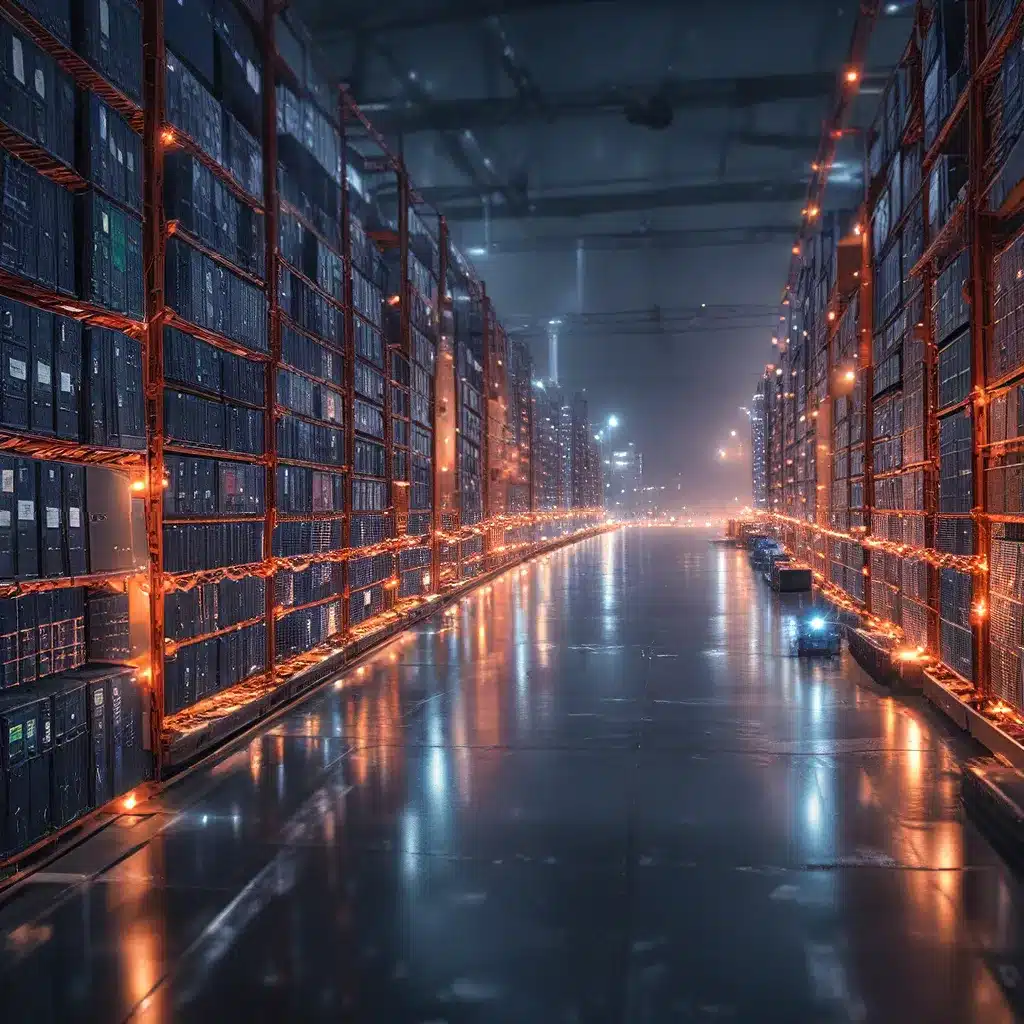
In the rapidly evolving world of the Internet of Things (IoT), the integration of sensor networks has become a critical component in revolutionizing supply chain management. From monitoring product conditions and transportation routes to optimizing inventory and logistics, these interconnected devices have transformed the way businesses operate. However, as the reliance on sensor-enabled technologies grows, so do the associated security risks.
Navigating the Vulnerabilities in Sensor-Driven Supply Chains
The cyber-enabled supply chain presents a complex web of interconnected systems, each with its own set of potential vulnerabilities. Malicious actors can target these weak points to disrupt operations, compromise sensitive data, or even gain unauthorized access to critical infrastructure. Understanding the common security challenges is the first step towards building resilience.
Supply Chain Risks: Threats and Attack Vectors
One of the primary concerns in sensor-driven supply chains is the lack of standardized security protocols. As IoT devices proliferate, manufacturers often prioritize rapid deployment over robust security measures, leaving gateways for cyber threats. These can range from data breaches and system hijacking to supply chain attacks that leverage vulnerabilities in the interconnected network.
Furthermore, the geographical distribution of supply chain operations can exacerbate security risks. Devices deployed in remote or uncontrolled environments are susceptible to physical tampering, potentially allowing adversaries to gain direct access to the network. The heterogeneity of sensor technologies and communication protocols also creates challenges in centralized security management.
Securing the Sensor-Enabled Supply Chain
Mitigating these vulnerabilities requires a multifaceted approach that combines technical, organizational, and human-centric strategies. Manufacturers must prioritize security by design, incorporating robust encryption, authentication, and access control mechanisms into their IoT devices from the outset. Supply chain stakeholders need to collaborate in establishing industry-wide security standards and best practices to ensure a cohesive defense.
The National Institute of Standards and Technology (NIST) provides a comprehensive framework for managing cyber supply chain risks, offering guidance on risk assessment, mitigation, and response planning. By aligning with these guidelines, organizations can proactively address vulnerabilities and enhance the overall resilience of their sensor-enabled supply chains.
Leveraging Emerging Technologies for Supply Chain Security
As the challenges continue to evolve, innovative technologies are emerging as powerful tools for strengthening supply chain security. Artificial Intelligence (AI) and machine learning algorithms can be employed to detect anomalies, identify emerging threats, and automate security responses in near real-time.
AI-enabled early warning systems, for instance, can analyze sensor data, supply chain logs, and external threat intelligence to provide predictive insights and proactive mitigation strategies. By continuously monitoring for suspicious activities, these intelligent systems can help organizations stay ahead of potential disruptions and minimize the impact of cyber-attacks.
Blockchain-Powered Supply Chain Transparency
Another promising technology is blockchain, which offers a secure, decentralized platform for supply chain traceability and transparency. By leveraging the immutable nature of blockchain ledgers, organizations can track the movement of goods, verify the authenticity of products, and detect any tampering or diversion along the way.
This increased visibility and accountability can significantly enhance supply chain security, as stakeholders can quickly identify the source of any issues and respond accordingly. Furthermore, the use of smart contracts on the blockchain can automate various supply chain processes, reducing the risk of human error or malicious intervention.
Energy-Efficient Sensor Network Design for Sustainable Supply Chains
In addition to security, the energy consumption of sensor networks is another critical consideration in supply chain management. As the number of IoT devices continues to grow, the demand for energy-efficient sensor network designs has become increasingly crucial.
Optimizing Power Management and Energy Harvesting
Strategies such as duty cycling, data compression, and energy harvesting can help extend the battery life of sensor nodes and reduce the overall energy footprint of the supply chain network. By intelligently managing the power consumption of individual devices, organizations can ensure uninterrupted monitoring and communication, even in remote or resource-constrained environments.
Integrating renewable energy sources, such as solar or vibration-based harvesters, further enhances the sustainability of sensor-driven supply chains. This not only reduces the environmental impact but also minimizes the need for frequent battery replacements, which can be logistically challenging and expensive, especially in large-scale deployments.
Leveraging Low-Power Network Protocols
The selection of appropriate communication protocols is another key factor in achieving energy efficiency. Emerging standards like LoRaWAN, Sigfox, and NB-IoT are designed to optimize power consumption, enabling sensor nodes to operate for extended periods on limited battery resources.
These low-power wide-area network (LPWAN) technologies leverage techniques such as duty cycling, adaptive data rates, and long-range transmissions to minimize energy usage, making them well-suited for supply chain applications that require long-distance connectivity and infrequent data transmissions.
The Road Ahead: Securing the Future of Sensor-Enabled Supply Chains
As the world of IoT continues to evolve, the role of sensor networks in supply chain management will only become more prominent. By addressing the security and energy-efficiency challenges, organizations can unlock the full potential of these technologies, enhancing supply chain resilience, sustainability, and competitiveness.
The journey towards a secure, sustainable sensor-driven supply chain requires a collaborative effort among industry stakeholders, policymakers, and technology providers. By embracing innovative solutions, adopting robust security measures, and prioritizing energy-efficient design, businesses can navigate the complexities of the sensor-enabled future and stay ahead of the curve.
The sensor networks and IoT community continues to play a pivotal role in shaping this transformative landscape, driving the development of cutting-edge technologies and fostering a culture of collaboration and knowledge-sharing. As we move forward, the successful integration of sensor networks into supply chain operations will not only improve operational efficiency but also safeguard the integrity of the entire ecosystem.